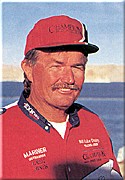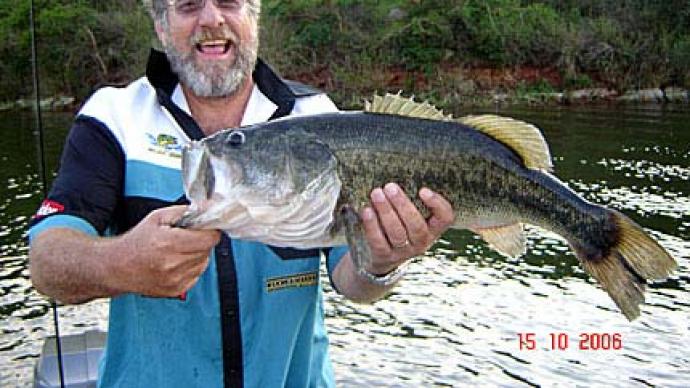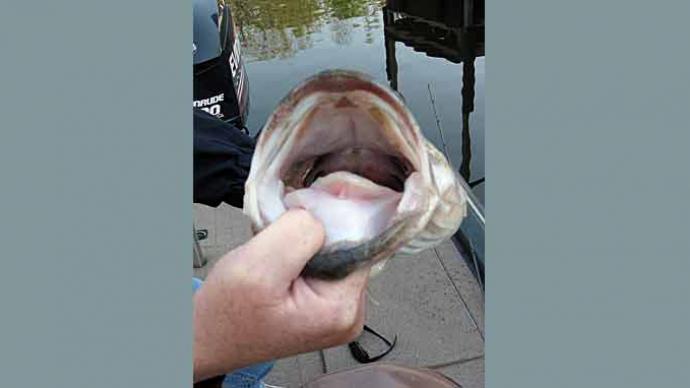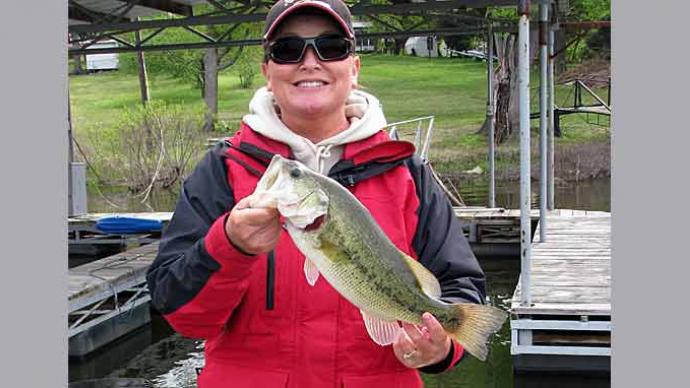
Casting has to be the most challenging thing to do in the wind. First, when wind gusts to 30 miles per hour or higher, even the best anglers miss their targets and suffer backlashes galore. Next, there is a tendency to make a big bow in the line, reducing your contact with the bottom and lessening sensitivity.
When you cast during a windstorm, make sure to make your casts very firm and stop the line with your thumb, making the lure pull the line tight. This will help limit backlashes and reduce the bow in your line. Another thing to remember is that while your lure is flying through the air, lower your rod tip. The closer you get your rod tip to the water, the less effect the wind will have on your line. This will provide a much better feel for what's happening with your lure after it hits the water and settles on the bottom.
The next thing to think about is what direction you cast. This is determined by shoreline, structure, and wind direction. Ideally, it's best to cast either with or against the wind rather than perpendicular to it. If you have a current coming back, created by incoming water or the wind, you want to cast into the current - no matter what direction the wind is blowing. This way, the bait will come down current right into the faces of the fish. Fish will generally face into the current.
Sometimes, due to wind direction or structure, you may have to fish up current, but the problem is, if you're casting with the wind in those situations, by the time your bait gets to the bottom, you're right on top of the bait and have lost much of your effectiveness.
On windy days, I will make my cast and let the bait go to the bottom, move it once or twice, reel it in, and move on. You can't work the bait as thoroughly as on calm days because losing control of boat positioning and feeling for the bait is too easy.
Controlling the boat is essential. I use a drift sock to help slow my drift in the wind. It will help you fish more efficiently and spend less time slowing the boat down with the trolling motor.
When the wind starts whipping up, you'll rely more heavily on crankbaits. They are easier to control, and the wind whips up a feeding zone that turns the fish on. And, with a crankbait, you can locate the actively feeding fish more readily. Some people think anglers' go-to reaction baits in the wind because it's difficult to fish the slower-moving worms and jigs. However, the actual reason for using reaction baits is that the wind has created a new feeding zone.
Besides the feeding zone created, the wind breaks up the light in the water, which gives the bass more confidence to go out and feed. The light penetration gets so broken up that it's like a light show underwater and provides the fish with better camouflage.
Baitfish become more confident, too, and will become more active. When you combine all these factors, reaction-type baits are excellent choices during the wind.
If the bite is still slow, switch to the tried-and-true methods, like Carolina rigging. Dropshotting can also be productive in the wind. The key, once again, is to keep your rod tip very low, nearly touching the water, to provide you with the best possible sensitivity.
While wind can give fish more confidence in clear water to move up shallow, but in muddy water, the wind can play another vital role, providing oxygen to the water.
On lakes such as Clear Lake, where the stained water stands still, and the wind is calm, the oxygen levels can deplete, causing the fish to become lethargic. However, when the wind does kick up, things start happening. What's impressive is how much trees and other structures provide oxygen. As the wind starts to blow against a tree in the water, the little limbs will start to stir the water, enhance oxygen levels, and turn the fish on. You will often find five or six bass up in 6 inches of 90-degree water because there are sticks and things in the water that stir up the oxygen and mix it with the water. Sometimes it's hard to believe the size of some of these fish lying so shallow, but it's due to oxygen deprivation.
Learn to work with the wind. The wind is not your enemy. It's your ally. The wind is good for the fish. You can use the wind to your advantage. I remember one tournament where the wind was blowing, and I placed a buoy out, started the big motor, and went past the mark. We drifted past the mark and caught a couple of fish. I fired up the big motor again and made the same pass with the same results. Before it was through, I probably started my big motor 50 times and never kicked in the trolling motor.
Fishing in the wind takes a lot of patience and persistence, but if you learn to manage the wind to your advantage, you will already be ahead of 80 percent of the field.
Reprinted with permission from Bass West Magazine




